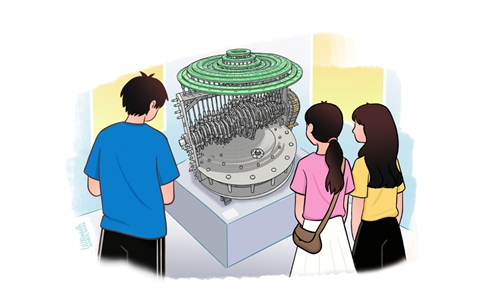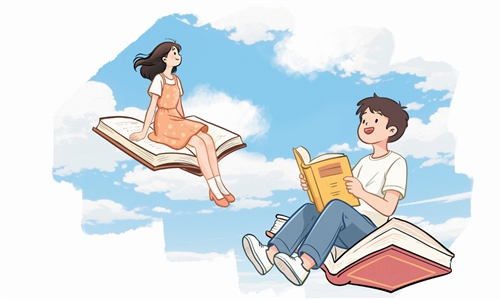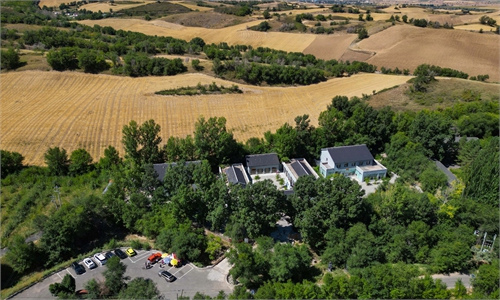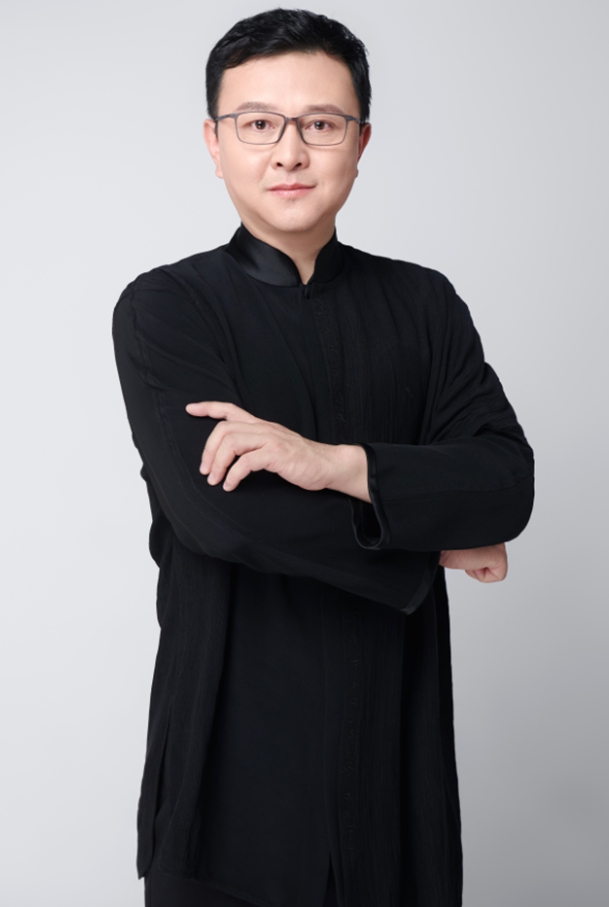
Liu Yuedi
Editor's Note:
In the 21st century, China's approach to aesthetic education emphasizes two main directions: moving away from the enlightenment paradigm and returning to the realm of everyday life. The goal of "aesthetic education of living" is to foster "artists of life," with the ultimate social ideal being that everyone becomes an artist. This article by Liu Yuedi, a professor with the Institute of Philosophy at the Chinese Academy of Social Sciences, discusses that aesthetic education is intertwined with life itself. Achieving "living aesthetics" depends on integrating the approach into "aesthetic education of living."
Throughout the 20th century, the positioning of aesthetic education in Chinese society was quite prominent. Influential educator Cai Yuanpei's "aesthetic education replaces religion" theory has pushed aesthetic education to a higher level. However, compared with Western society, except for the "romanticism" tradition, there has not been a similar orientation in the history of Western thought that has placed aesthetic education in a position to replace religion. The acquisition of this social status in China is not accidental, but is inevitably closely related to China's "social enlightenment" since modern times, and more deeply related to China's aesthetic tradition.
In modern China, aesthetic education has long carried the mission of enlightenment. Since modern times, Chinese social enlightenment has been closely linked with aesthetic education. This intertwining and mutual reinforcement of aesthetic education and enlightenment has persisted for over a century. However, in the 21st-century Chinese social context, subtle shifts are quietly transforming the social functions that aesthetic education once carried out.
"Education is not preparation for life; education is life." This is a wise saying from the famous US writer Ralph Waldo Emerson. The idea had an important influence on the educational theory of US thinker John Dewey and the educational practice in the US.
In fact, this is even more true for aesthetic education. Aesthetic education is life itself rather than preparation for life.
The goal of life-oriented aesthetic education is to foster artists of life - individuals who create their lives much like artists create artworks. It is important to clarify that "aesthetic education of living" is not aimed at producing "aestheticians," as aestheticians primarily focus on theories and tend to emphasize aesthetic observation rather than aesthetic creation. In contrast, "artists of life" are different.
The so-called "artists of life" are professional non-artists - they do not pursue art as a career but approach life, society, and personal existence with an artistic and aesthetic attitude. To put it simple, "artists of life" treat life as art, rather than "art for art's sake" (l'art pour l'art).
Moreover, the Confucian "Six Arts Education" is the historical foundation of life-oriented aesthetic education.
The Six Arts (known as Liuyi in Chinese) are rites, music, archery, charioteering, calligraphy and mathematics.
"Aesthetic education of living" is not only a logical extension and organic development of living aesthetics but is also deeply rooted in indigenous traditions. Predominantly, it is grounded in Confucian and Taoist life aesthetics. The Confucian and Taoist aesthetic traditions form the fundamental color and underlying essence of China's traditional "living aesthetics."
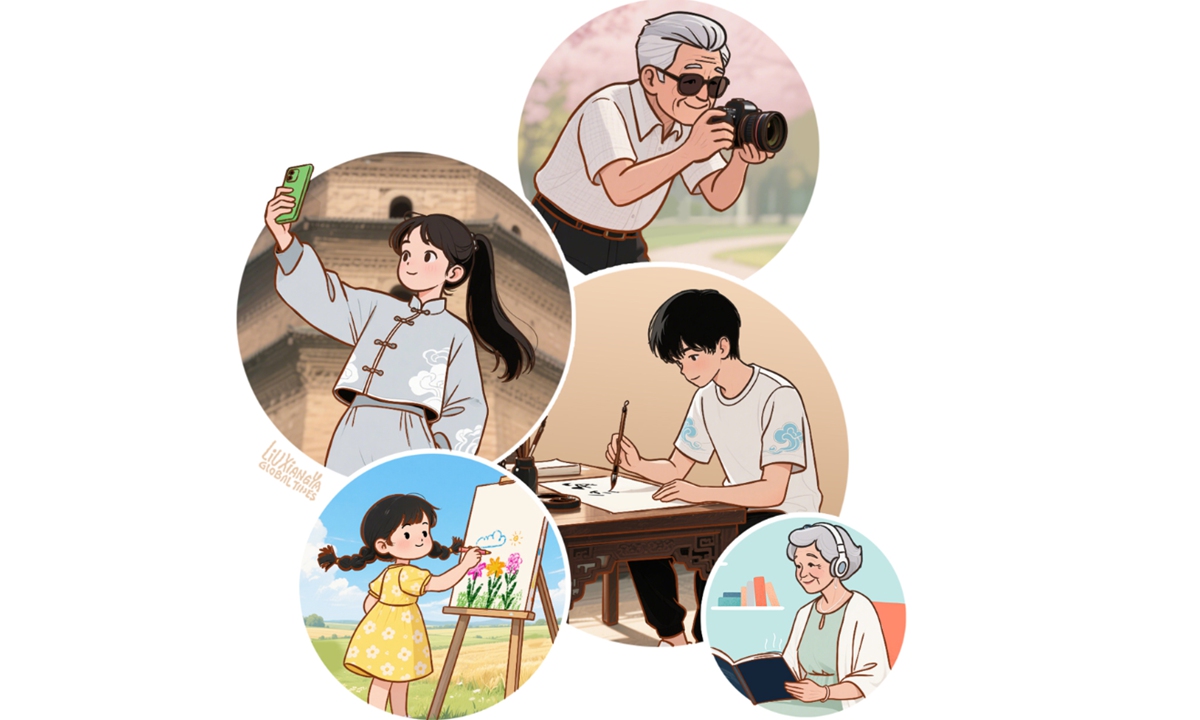
Illustration: Liu Xiangya/GT
The entire Confucian "living aesthetics" follows the teaching concepts of Confucius, and Liuyi is a comprehensive education system that originates from life and has beautiful qualities.
This is also applicable with Taoist life aesthetics. Both Confucian and Taoist aesthetics originate from life and return to life. At the same time, they are both committed to the process experience of "aesthetic education of living." From this perspective, experience is life, learning is the process of life, and it is a process of "acquiring experience."
Therefore, "aesthetic education of living" is also an important tradition of Chinese aesthetics. "Confucian aesthetics in life" is to turn everyone who accepts "humanistic education" into "artists in life," while "Taoist aesthetics in life" makes people become another kind of "artists in life" through "naturalization."
The "aesthetic education of living" in both Confucianism and Taoism constitutes a complementary trend, thus framing the basic structure of traditional Chinese aesthetic education. From the perspective of world civilization, the "aesthetic education of living" from the pre-Qin period is precisely the Chinese tradition, while the "art education" from ancient Greece is the European tradition.
Features of new aesthetic education can be summarized as "cultural education," "self-education," and "lifelong education."
After establishing the core ideas and traditional foundations of the "aesthetic education of living" view, we can now explore its various characteristics. Although these features are diverse, compared to the old concept of aesthetic education, at least three new features stand out: "Aesthetic education of living" is not merely art education but aesthetic education in a larger scope with culture as its core. Of course, this does not deny the position that art education has occupied in "aesthetic education of living."
Next, "aesthetic education of living" is no longer all about being educated. Rather, it is more about "self-education." It is "equal education" that stresses openness and dialogue more. Additionally, "lifelong education" is not just short-term training but a "lifelong journey."
Cai had long seen the flaws of school aesthetic education, where "students are NOT in school all the time, plus many of them have already graduated from school, so it is barely possible to offer them a chance for aesthetic education."
Given the context that it is impossible for a person to exist without society and that culture almost always accompanies a person throughout one's life, the reason why "aesthetic education of living" emphasizes "lifelong education" is that life is from beginning to end for everyone, and aesthetics, as a component of life, plays an important role in it. Therefore, "aesthetic education of living" must be a form of lifelong education.
The ultimate social ideal is that "everyone is an artist." Looking to the future, the ultimate goal of "living aesthetics" is for every individual to become an artist. The reason we do not specifically say that the ultimate ideal is for everyone to be "artists of life" is because, in a future era where the boundaries between art and life are broken, art will be life, and life will be art.
In summary, the development of a new aesthetic education in 21st-century China involves two main directions: moving away from the enlightenment paradigm and returning to everyday life. Therefore, the goal of "aesthetic education of living" is to foster "artists of life," with the ultimate social ideal being that everyone becomes a life artist. Achieving the goal of "living aesthetics" depends on implementation of "aesthetic education of living."
The author is a professor with the Institute of Philosophy at the Chinese Academy of Social Sciences
